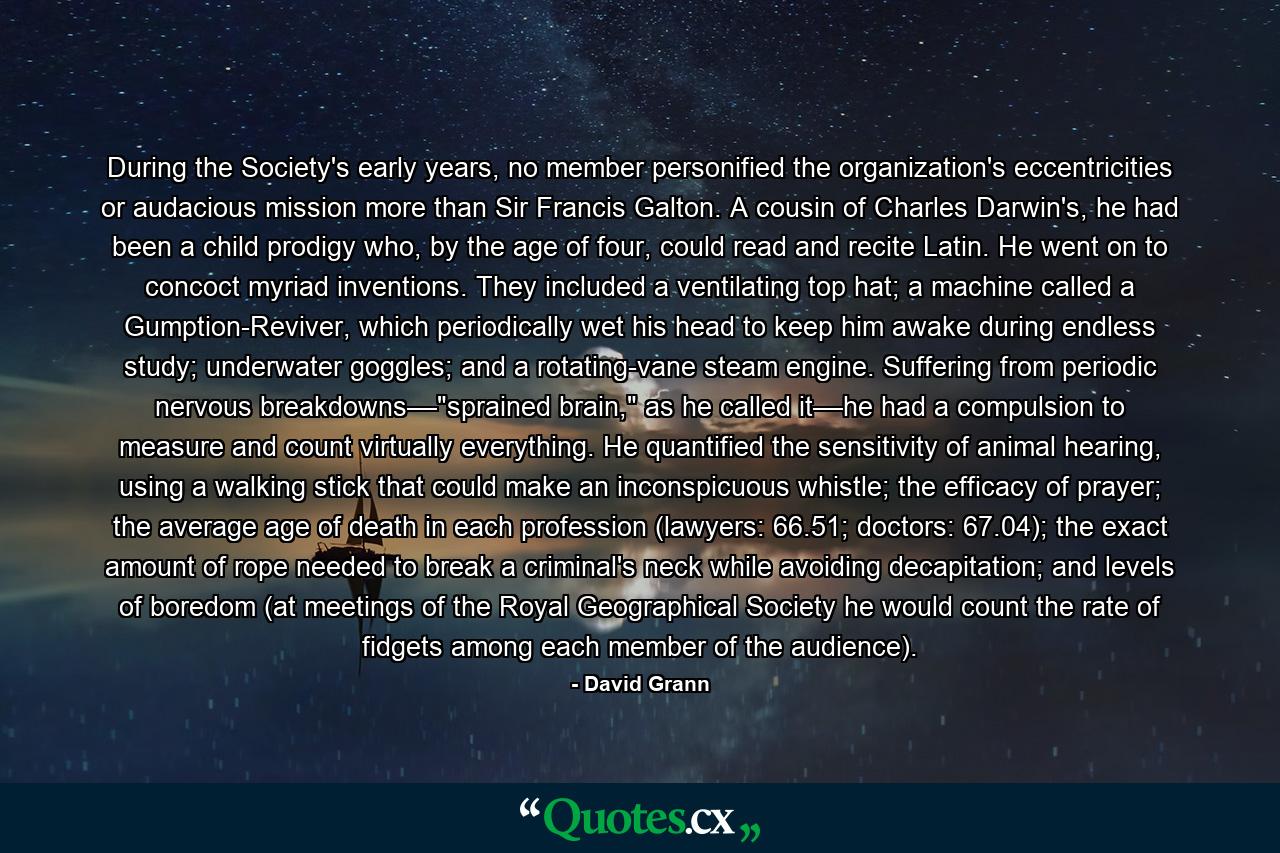During the Society’s early years, no member personified the organization’s eccentricities or audacious mission more than Sir Francis Galton. A cousin of Charles Darwin’s, he had been a child prodigy who, by the age of four, could read and recite Latin. He went on to concoct myriad inventions. They included a ventilating top hat; a machine called a Gumption-Reviver, which periodically wet his head to keep him awake during endless study; underwater goggles; and a rotating-vane steam engine. Suffering from periodic nervous breakdowns––”sprained brain,” as he called it––he had a compulsion to measure and count virtually everything. He quantified the sensitivity of animal hearing, using a walking stick that could make an inconspicuous whistle; the efficacy of prayer; the average age of death in each profession (lawyers: 66.51; doctors: 67.04); the exact amount of rope needed to break a criminal’s neck while avoiding decapitation; and levels of boredom (at meetings of the Royal Geographical Society he would count the rate of fidgets among each member of the audience).
